There are many species of native shrubs that grow in the shade. These native plants need little sunlight and some species can handle deep shade conditions.
Add some color and texture to those shady areas in your garden with shade-loving native shrubs that flower in the shade.
By adding these native shade shrubs in your landscape, you are creating habitat, providing food, and adding visual interest to your shade garden.
Each native shrub listed below is organized by bloom time so that you can plan out color for each season. Also, I have listed the plant’s light requirement, soil moisture tolerance, and wildlife value. Browse through the list to find the shrubs you want to add to your shady spots. Happy gardening!
Native Shade-Tolerant Shrubs that Bloom in Spring
Native Azaleas
Rhodendron spp.
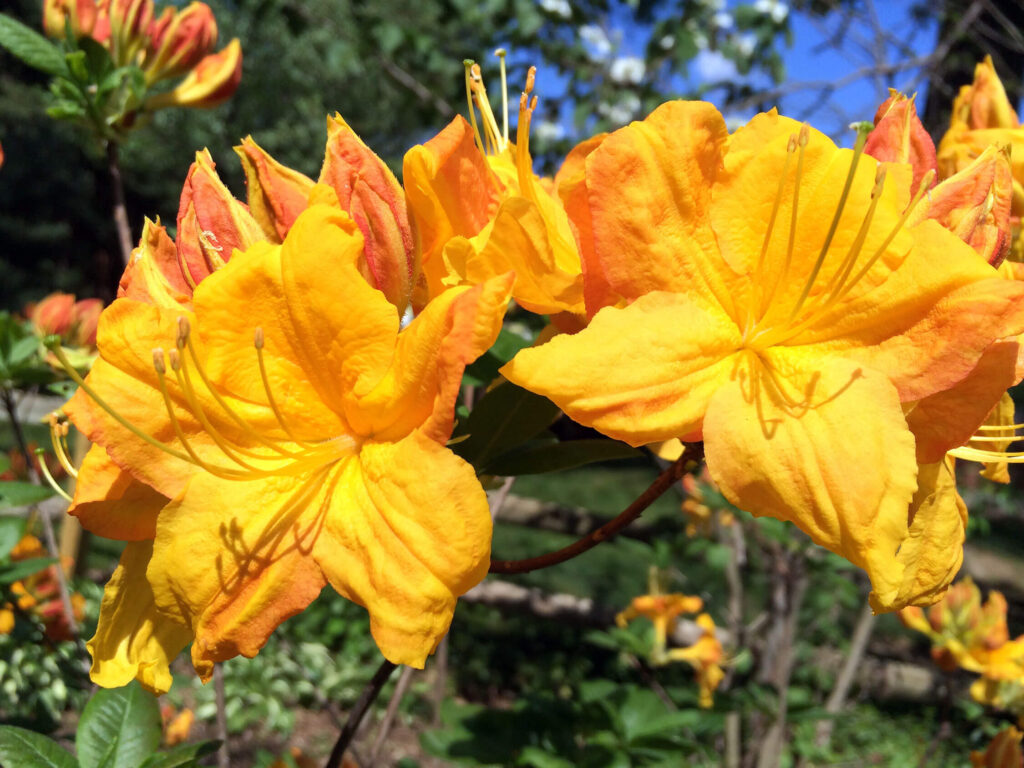
There are many species of native azaleas, you’ll need to check to see the height, bloom time, and growing conditions for each one.
Height: 1-3 feet to 6-12 ft, depending on species
Bloom Time: March – May, some in June-July
Light Requirement: Part shade
Soil Moisture: Moist
Water Use: Medium
Wildlife Value: Attracts bees and butterflies
Native Range: Southeastern states
Learn more about native azaleas.
Red Buckeye
Aesculus pavia
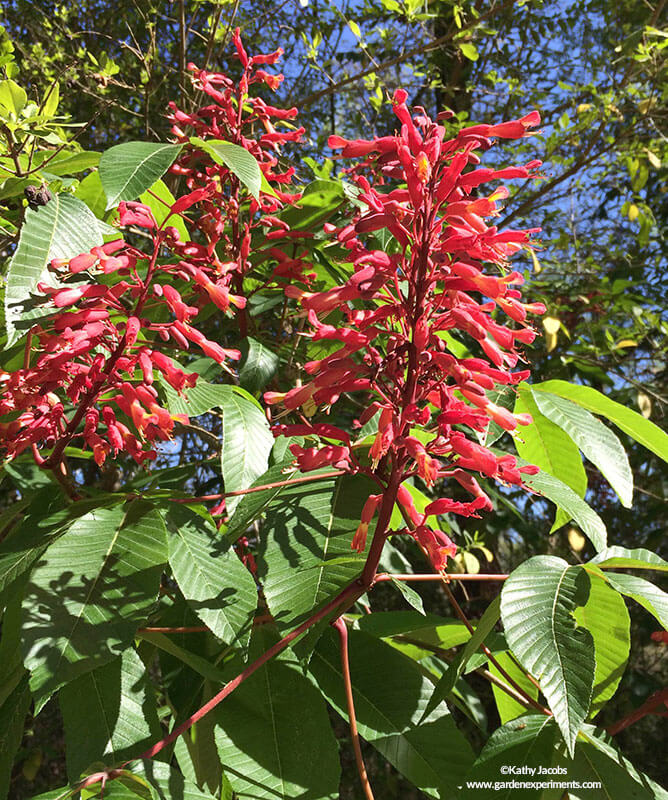
Also known as firecracker plant or scarlet buckeye
Height: 15-20 feet
Bloom Time: March – May
Light Requirement: Part shade
Soil Moisture: Moist
Water Use: Medium to high
Wildlife Value: Early food source for hummingbirds, attracts bees and butterflies, small mammals eat the nuts.
Native Range: Southeastern states plus Indiana, Illinois, Texas, Oklahoma, and Missouri.
Learn more about red buckeye.
Virginia Sweetspire
Itea virginica
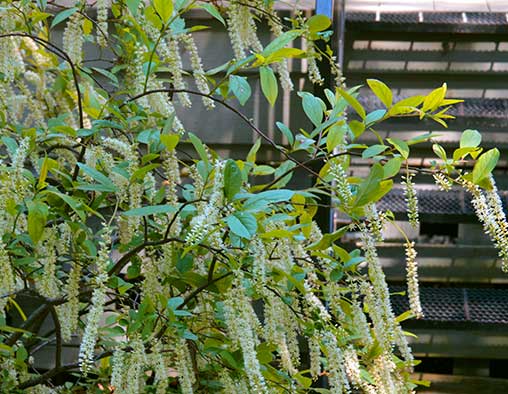
Also known as Virginia willow or sweetspire
Height: 3 – 8 feet
Bloom Time: April – June
Light Requirement: Shade to part-shade
Soil Moisture: Moist
Water Use: High
Wildlife Value: Pollinators feed on the nectar, birds and other wildlife use the plant for cover.
Native Range: Southeastern states plus Indiana, Illinois, Pennsylvania, Texas, Oklahoma, and Missouri.
Learn more about Virginia sweetspire
Native Shrubs for Shade that Bloom in Summer
Bottlebrush Buckeye
Aesculus parviflora
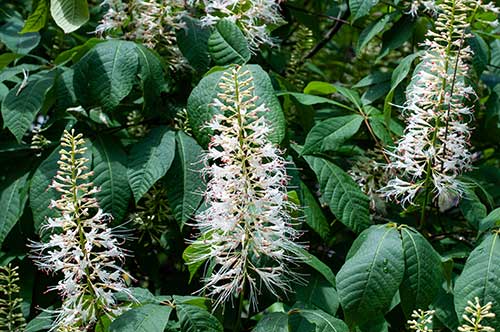
Height: 8-12 feet
Bloom Time: June – July
Light Requirement: Full sun to part shade
Soil Moisture: Moist
Water Use: Low
Wildlife Value: Bees, hummingbirds, and butterflies feed on the nectar.
Native Range: Alabama, Georgia, New Jersey, Pennsylvania, and South Carolina
Learn more about bottlebrush buckeye
Buttonbush
Cephalanthus occidentalis
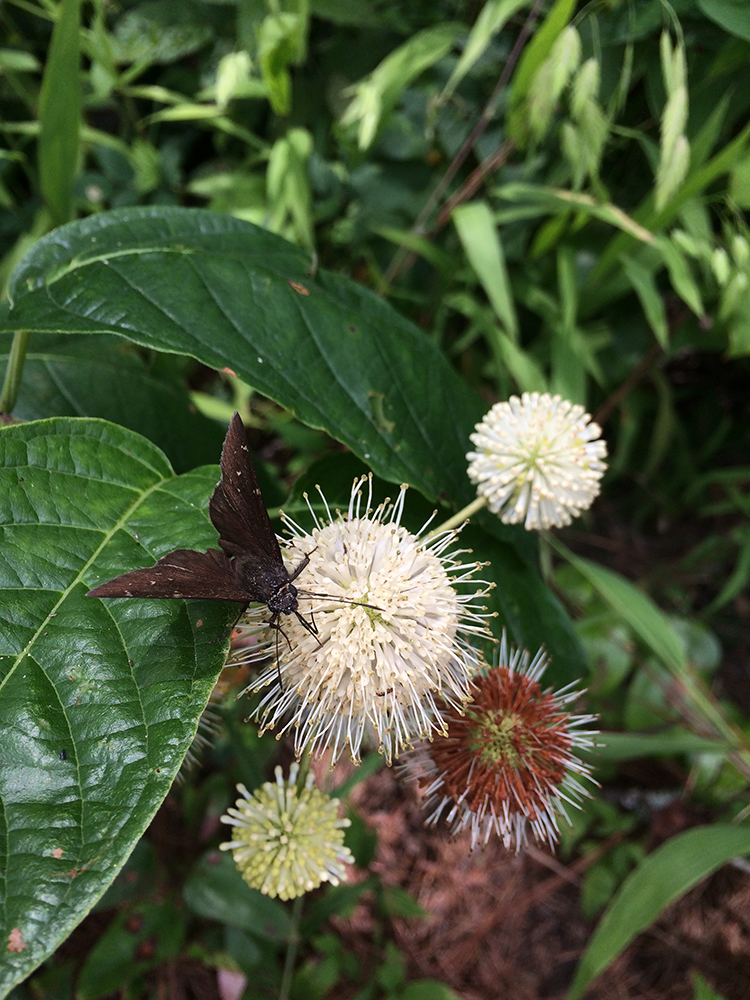
Also known as honeybells, common buttonbush, button willow
Height: 6-12 feet
Bloom Time: June – Sept.
Light Requirement: Shade to part-shade
Soil Moisture: Moist, wet
Water Use: High
Wildlife Value: Bees and butterflies feed on the nectar, ducks and other waterfowl feed on seeds and use the plant for cover, deer feed on new growth.
Native Range: Eastern U.S. and Texas, Oklahoma, Kansas, and Nebraska as well as Arizona and California.
Learn more about buttonbush
Oakleaf Hydrangea
Hydrangea quercifolia
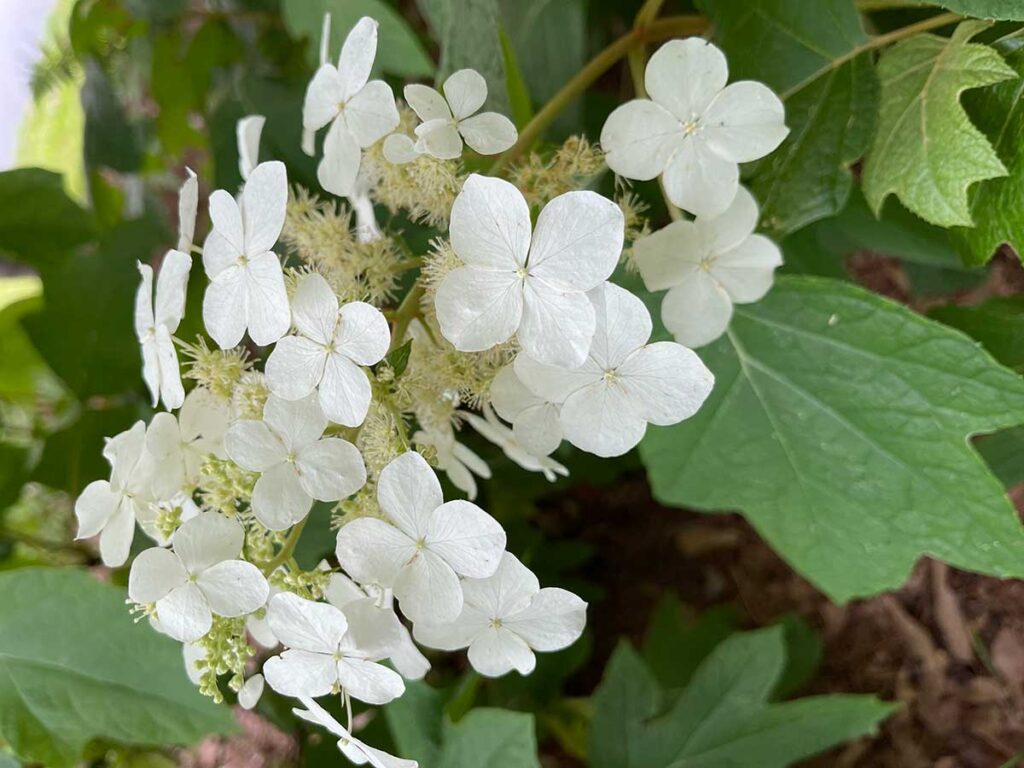
Also known as oak leaf hydrangea, oakleaf hydrangea, or oak-leaved hydrangea.
Height: 3-10 feet
Bloom Time: June – July
Light Requirement: Shade to part-shade
Soil Moisture: Moist
Water Use: Medium
Wildlife Value: Deer feed on new growth, some birds use it for cover.
Native Range: Louisiana, Mississippi, Alabama, Georgia, Florida, Tennessee, South Carolina, and North Carolina
Learn more about oakleaf hydrangea.
Sweet Shrub
Calycanthus floridus
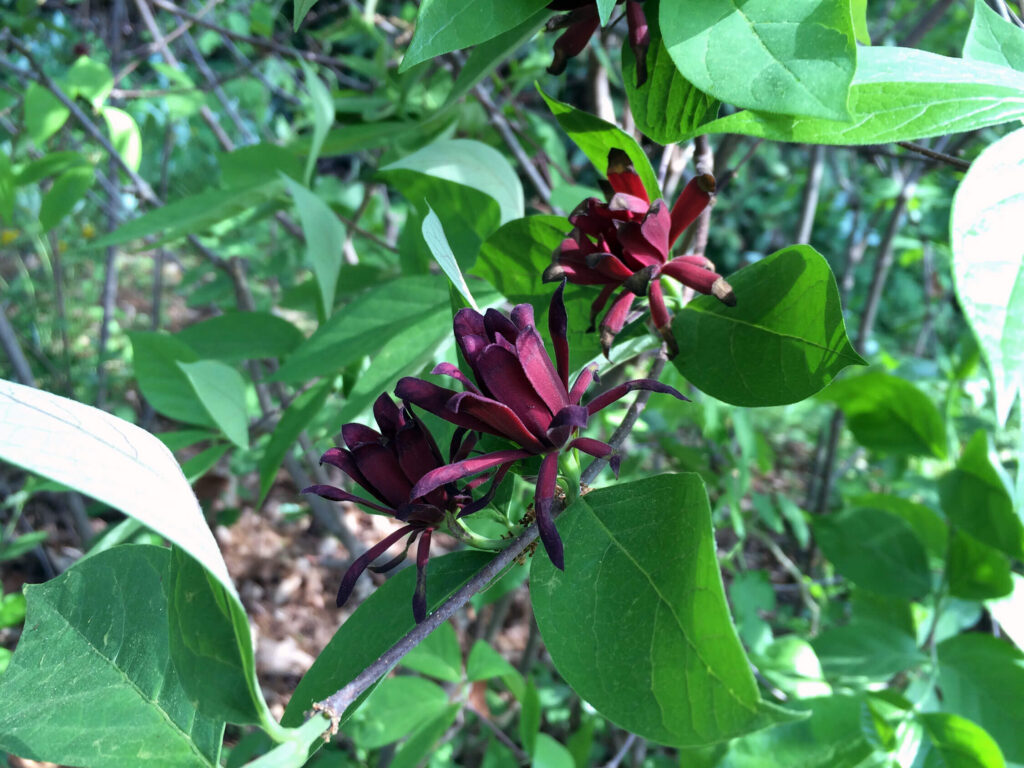
Also known as Carolina allspice, sweet Betsy, and spicebush.
Height: 6-10 feet
Bloom Time: May – July
Light Requirement: Full sun to part shade
Soil Moisture: Moist
Water Use: Medium
Wildlife Value: Butterflies feed on the nectar, other insects feed at the flowers.
Learn more about sweetshrub.
Native Shade Shrubs that Bloom or Have Colorful Berries in Fall
American Beautyberry
Callicarpa americana
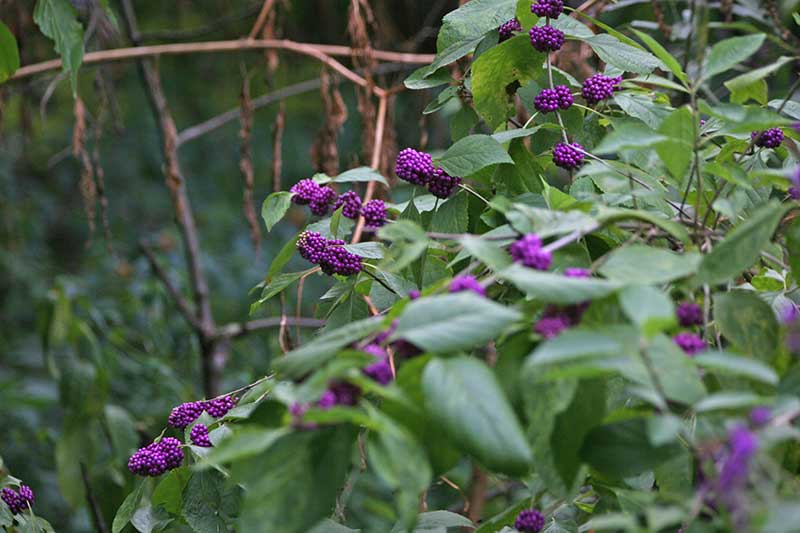
Also known as French mulberry, Spanish mulberry, sourberry or sow-berry.
The flowers are lavender and very small, but the bright purple berries are a showstopper in the fall.
Height: 3-5 feet
Bloom Time: May – July. Berries in fall.
Light Requirement: Part shade to full sun
Soil Moisture: Moist
Water Use: Low
Wildlife Value: Songbirds and small mammals eat the berries, deer eat the leaves in spring and summer. Pollinators feed on nectar from the flowers in spring. Host plant for larval stage of certain moths and butterflies.
Learn more about how to grow American beautyberry
Strawberry Bush
Euonymous americanus
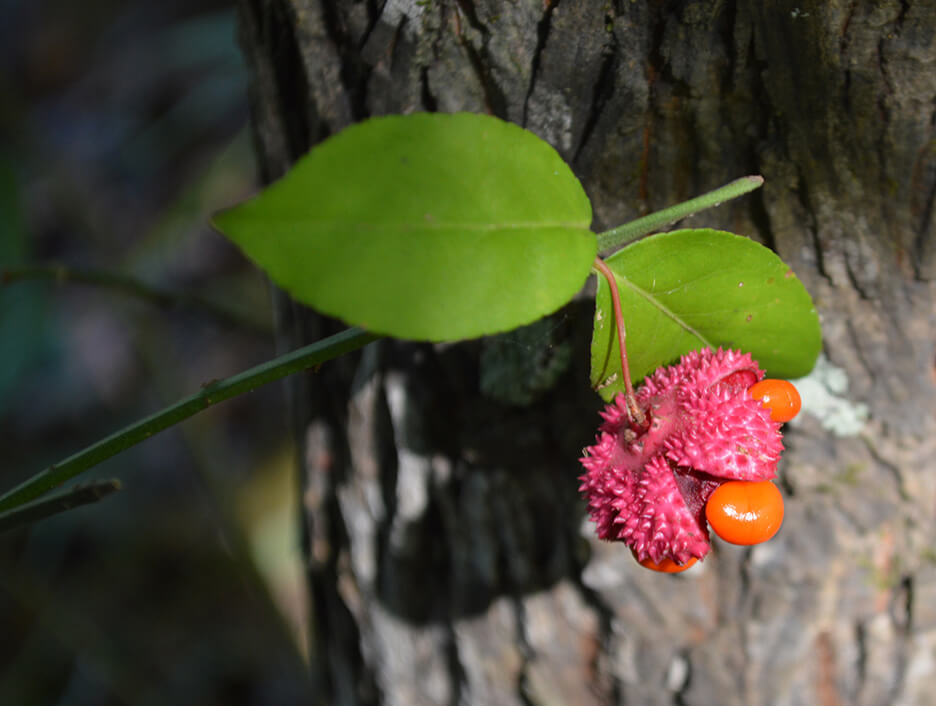
Also known as hearts-a-bursting, hearts-a-bustin, strawberry plant, wahoo.
While this shrub blooms in the summer, the blooms are green and inconspicuous. It is the berries that come in fall that have the bright. color
Height: 6-12 feet
Bloom Time: May – June. Berries in fall.
Light Requirement: Part shade
Soil Moisture: Dry or moist
Water Use: High
Wildlife Value: birds eat the fruit and seeds, small mammals eat the seeds, deer and beaver browse on the leaves.
Learn more about strawberry bush.
Witch Hazel
Hamamelis virginiana
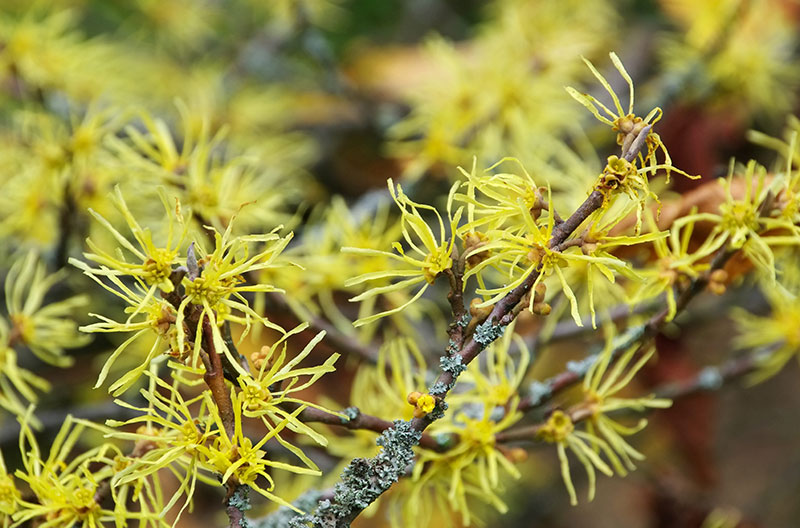
Also known as spotted alder, water-witch, American witch hazel, winterbloom, striped alder
Height: 10-15 feet
Bloom Time: Sept. – Dec.
Light Requirement: Shade to part-shade
Soil Moisture: Dry or moist
Water Use: Medium
Wildlife Value: birds eat the fruit and seeds, small mammals eat the seeds, deer and beaver browse on the leaves.
Native Range: Eastern U.S. and Texas and Oklahoma
Learn more about witch hazel
